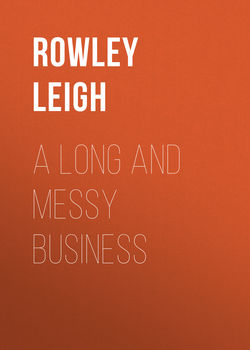Читать книгу A Long and Messy Business - Rowley Leigh - Страница 47
На сайте Литреса книга снята с продажи.
ОглавлениеNo Fool Like an Old Fool
Rhubarb Fool
Rhubarb comes ever earlier. The earliest rhubarb I have
seen – the finest, slenderest, most elegant forced Yorkshire
rhubarb – was at the River Café a week before Christmas.
There is nothing we chefs hate more than a rival gaining
an ingredient ahead of them in the season. Since we share
the same greengrocer, I berated him for not telling me
about the rhubarb. He cleverly argued that since I was
such a stickler for seasonality, he didn’t think I would have
thought it right to be serving rhubarb before Christmas.
The River Café were right, of course. Forced rhubarb,
far from being a product of the seasons, exists in defiance
of them. Like radicchio tardivo and sea kale, it is produced
by deceiving nature and encouraging the plants to grow
just when nothing is supposed to grow, at least not in our
latitudes. There is certainly nothing very ‘natural’ about
Yorkshire rhubarb, nor anything particularly attractive
about the triangle, a tiny pocket of land roughly defined
by Wakefield, Rothwell and Morley and centred on the
intersection of two motorways. The rhubarb industry owes
its location to its transport infrastructure, its adverse
climactic conditions – the triangle forms a frost pocket
under the Pennines – and the wool industry that supplies
the ‘shoddy’, a mix of various forms of wool waste. I find it
splendid that such a beautiful and rarefied plant should
rise out of such inauspicious conditions.
It would be easy to suppose that the sudden arrival of
rhubarb is just another consequence of global warming,
but the opposite is the case. The whole business of
growing rhubarb is to fool the plant into thinking spring
has arrived: the rootstock is left outside in the autumn and
needs a sharp frost to be convinced that it is winter –
hence the miserable weather enjoyed by the hardy rhubarb
farmers of the triangle. Once the frost has happened, the
plants can be taken inside to the warmer shed and then
duped into thinking it is safe to grow. Thus the earlier
and sharper the frost, the sooner the rhubarb will shoot.
We had a mild autumn, so I was puzzled by the
December rhubarb. It emerged that its producer stole a
march on his competitors by treating the plants with an
acid that encourages the conversion of carbohydrate to
sugar, which stimulates the plant to shoot. With such
trickery going on, my mind has been put to rest and I have
forgiven my greengrocer.
70
